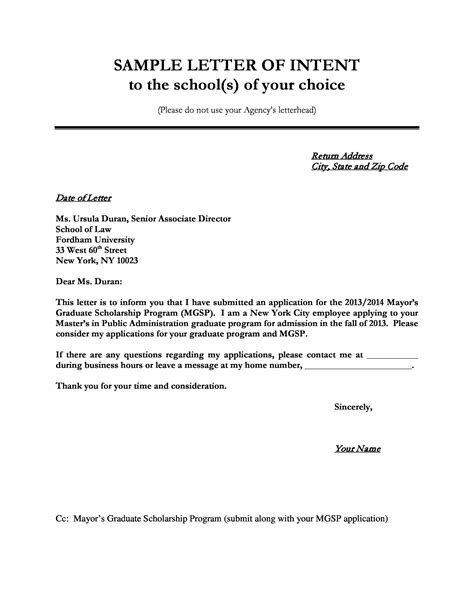Writing A Job Intent Letter + Examples

When searching for a job, one of the most important things you’ll need to do is write a job intent letter. This letter is your opportunity to introduce yourself to potential employers and explain why you’re interested in working for them. In this post, we’ll walk you through everything you need to know about writing a job intent letter and provide you with some examples to help get you started.
What is a Job Intent Letter?
A job intent letter, also known as a cover letter, is a document that accompanies your resume when applying for a job. The purpose of the letter is to introduce yourself to potential employers and explain why you’re interested in working for them. The letter should be tailored to the specific job and company you’re applying to and should highlight your skills and experiences that make you a good fit for the position.
Why is a Job Intent Letter Important?
A job intent letter is important because it’s the first thing a potential employer will see when considering your application. It gives you the opportunity to make a good first impression and explain why you’re the best candidate for the job. A well-written letter can set you apart from other applicants and increase your chances of getting an interview.
How to Write a Job Intent Letter
1. Research the Company
Before you start writing your letter, it’s important to research the company you’re applying to. This will help you tailor your letter to the specific job and company and show that you’ve done your homework. Look at the company’s website, social media profiles, and any recent news articles to get a sense of their values, culture, and current projects.
Example:
If you’re applying to a tech startup, you might research their recent product launches, their company culture, and their mission statement to get a sense of what they’re looking for in an employee.
2. Address the Letter to the Right Person
It’s important to address your letter to the right person, rather than using a generic salutation like “To Whom it May Concern.” If the job listing doesn’t include the name of the hiring manager, do some research to find out who it is. You can often find this information on the company’s website or LinkedIn page.
Example:
If you’re applying to a marketing position at a small startup, you might address your letter to the CEO or head of marketing.
3. Start with a Strong Opening
Your opening should grab the reader’s attention and make them want to keep reading. You might start with a personal anecdote, a shocking statistic, or a thought-provoking question.
Example:
If you’re applying to a nonprofit that focuses on environmental advocacy, you might start by telling a story about how you’ve always been passionate about protecting the planet.
4. Explain Why You’re Interested in the Job
In the next paragraph, explain why you’re interested in the job and why you think you’d be a good fit for the company. Be specific and highlight your skills and experiences that make you a strong candidate.
Example:
If you’re applying to a graphic design position, you might explain how your experience with Adobe Creative Suite and your eye for design make you a strong candidate for the job.
5. Provide Evidence to Support Your Claims
It’s not enough to simply say that you’re a good fit for the job – you need to provide evidence to back up your claims. This might include specific examples of projects you’ve worked on, metrics you’ve achieved, or awards you’ve won.
Example:
If you’re applying to a sales position, you might provide data on how you’ve exceeded your sales quotas in previous roles.
6. Close with a Strong Call-to-Action
Your closing should encourage the reader to take action, such as inviting them to contact you for an interview or thanking them for their time.
Example:
If you’re applying to a customer service position, you might close by saying that you’re excited to hear back from them and would love the opportunity to discuss your qualifications further.
FAQs
What’s the difference between a job intent letter and a resume?
A job intent letter is a document that accompanies your resume when applying for a job. It’s an opportunity to introduce yourself to potential employers and explain why you’re interested in working for them. A resume, on the other hand, is a document that outlines your work experience, education, and skills.
Do I need to write a job intent letter for every job I apply to?
Yes, it’s important to tailor your job intent letter to the specific job and company you’re applying to. This shows that you’ve done your research and are genuinely interested in the job.
What should I include in my job intent letter?
Your job intent letter should include an introduction, an explanation of why you’re interested in the job, evidence to support your claims, and a strong call-to-action. It should be tailored to the specific job and company you’re applying to.
How long should my job intent letter be?
Your job intent letter should be no more than one page long. Keep it concise and to the point.
What should I avoid in my job intent letter?
Avoid using a generic salutation, such as “To Whom it May Concern,” and avoid making spelling or grammar mistakes. Also, don’t simply repeat what’s on your resume – use your job intent letter to highlight specific skills and experiences that make you a good fit for the job.
Conclusion
Writing a job intent letter can be daunting, but it’s an important part of the job application process. By following these tips and tailoring your letter to the specific job and company you’re applying to, you’ll increase your chances of getting noticed by potential employers and landing your dream job.
